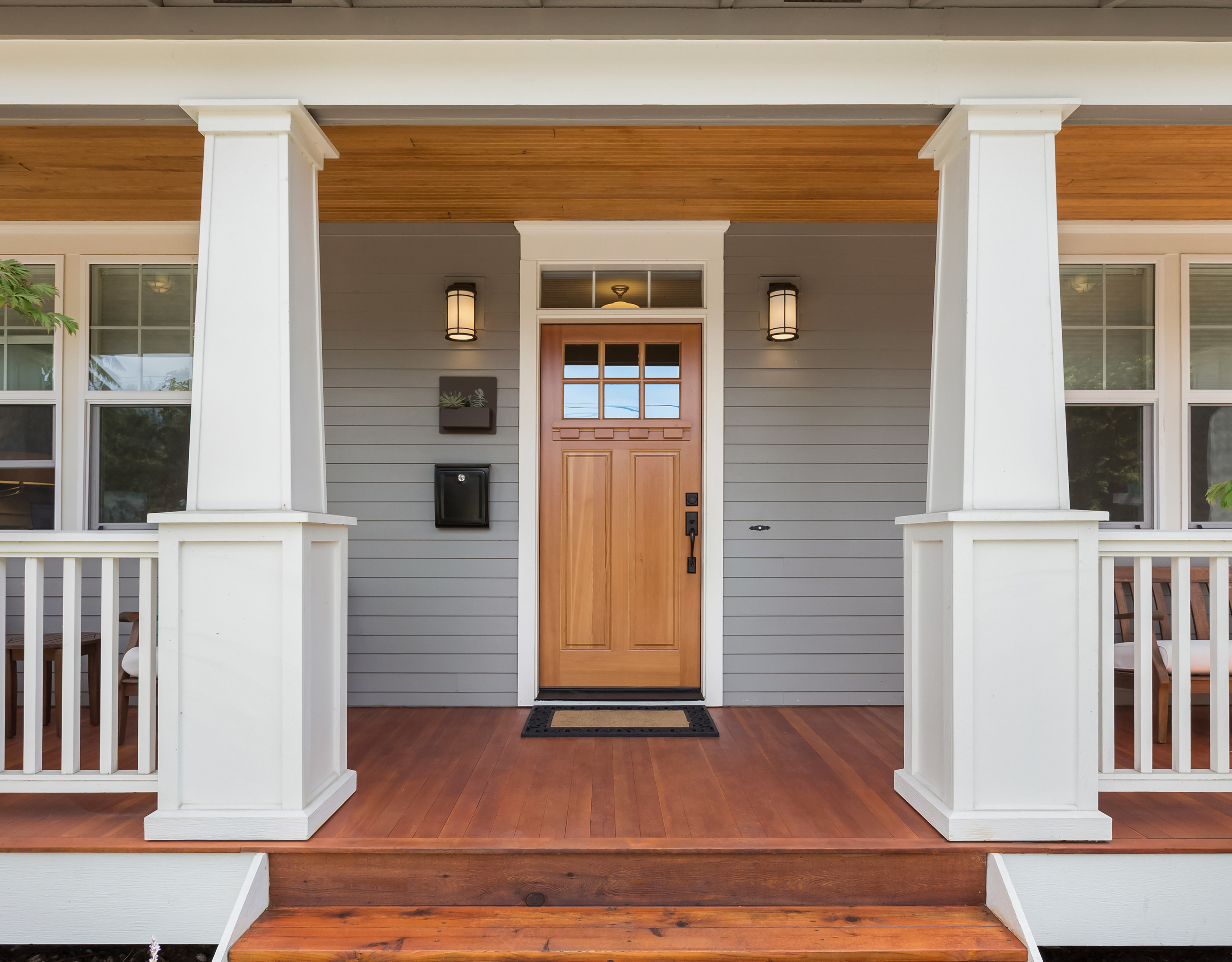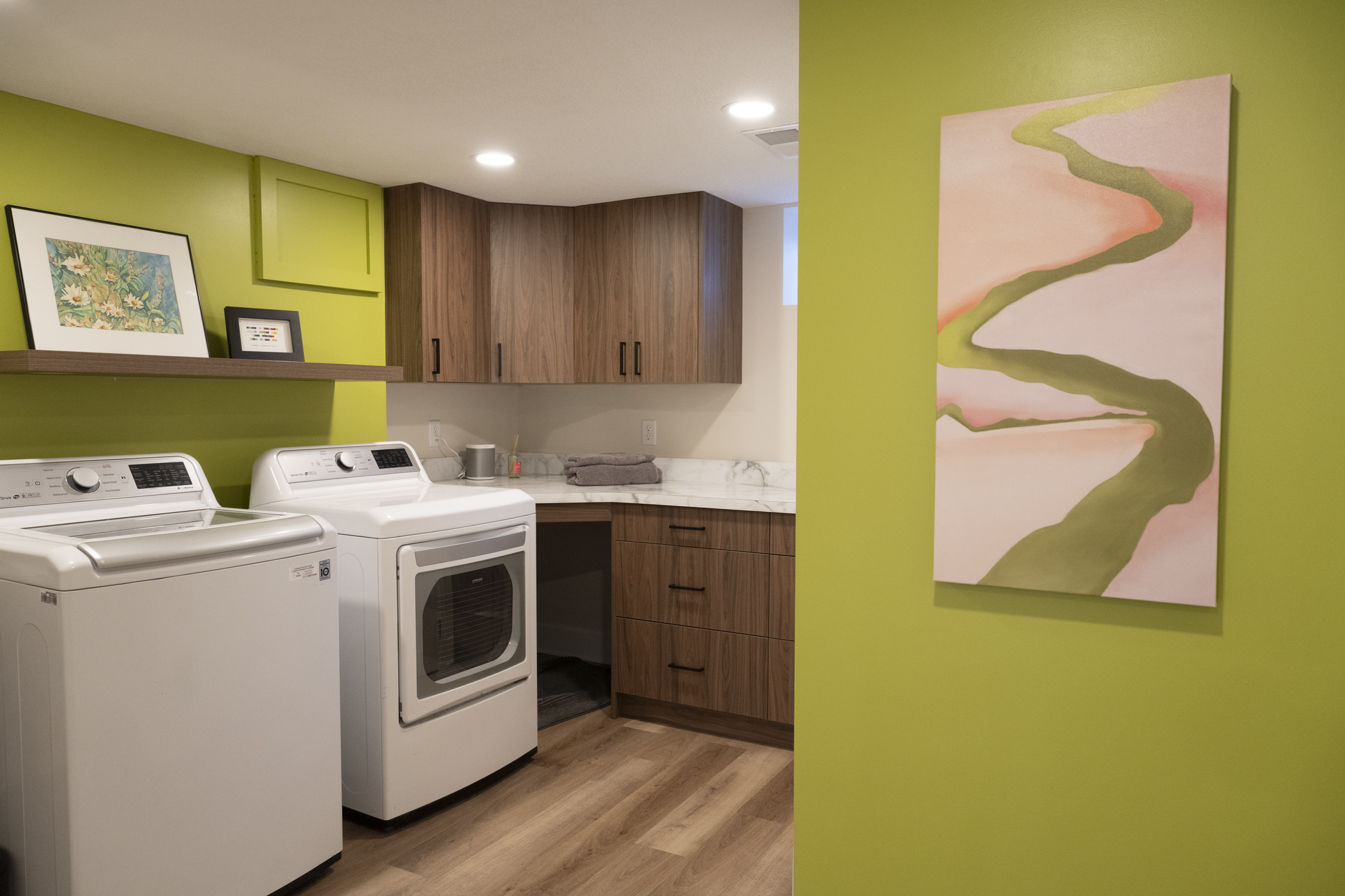During remodeling planning, we’re often asked what kind of countertop surface is best. Homeowners usually assume the choice is between granite and quartz. However, depending on your needs, style preferences, and budget, there’s actually a whole world of other materials to consider for your countertops!
While quartz and granite do remain favorites of many homeowners, that doesn’t necessarily mean they are for everyone. There are many alternatives to consider, such as marble, acrylic solid surface, porcelain, wood, – and even plastic laminate surfaces.
Marble
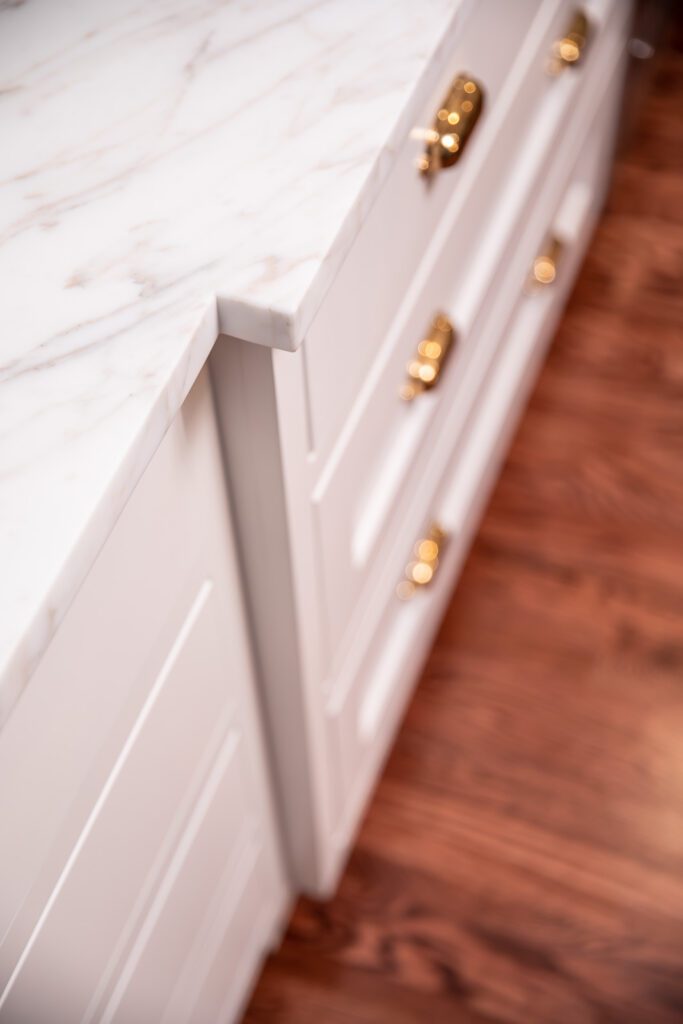 Pros: Marble is a natural stone that’s been used in kitchens for hundreds of years, predominantly because of its beauty and durability. It offers a variety of colors and can be less expensive than quartz or stainless steel. Marble adds a timeless, elegant feel to your kitchen.
Pros: Marble is a natural stone that’s been used in kitchens for hundreds of years, predominantly because of its beauty and durability. It offers a variety of colors and can be less expensive than quartz or stainless steel. Marble adds a timeless, elegant feel to your kitchen.
Cons: The two biggest cons of a marble countertop are scratching and staining. It’s porous, and certain foods and drinks (wine, anyone?) can leave a stain. Acid-based foods and products can also cause scratches — etching in the marble that doesn’t go away. Some homeowners, however, embrace the patina created by used marble over the years and think it’s a small price to pay for its exquisite beauty.
Acrylic Solid Surface
Acrylic Solid surface counters like Corian Solid Surface and LG Hi-Macs are nonporous, engineered products. They provide a solid construction that resists bacteria.
Pros: While not as hard as quartz, they’re still quite durable. Small scratches can be buffed or sanded away, and compared with other countertops, they’re moderately priced. They also come in a wide variety of colors and designs, including seamless options. Acrylic Solid surfaces materials are easily formed and fabricated and have options for fully-integrated sinks and backsplashes which simplify cleaning.
Cons: You can’t put hot cookware on solid surfaces without damaging them, and heat damage can’t be repaired. The material also scratches and dents easily, and the resale value isn’t as high as most other countertops.
Porcelain
Pros: Although Porcelain tiles have been an age-old countertop surface, large format or sheet porcelain is relatively
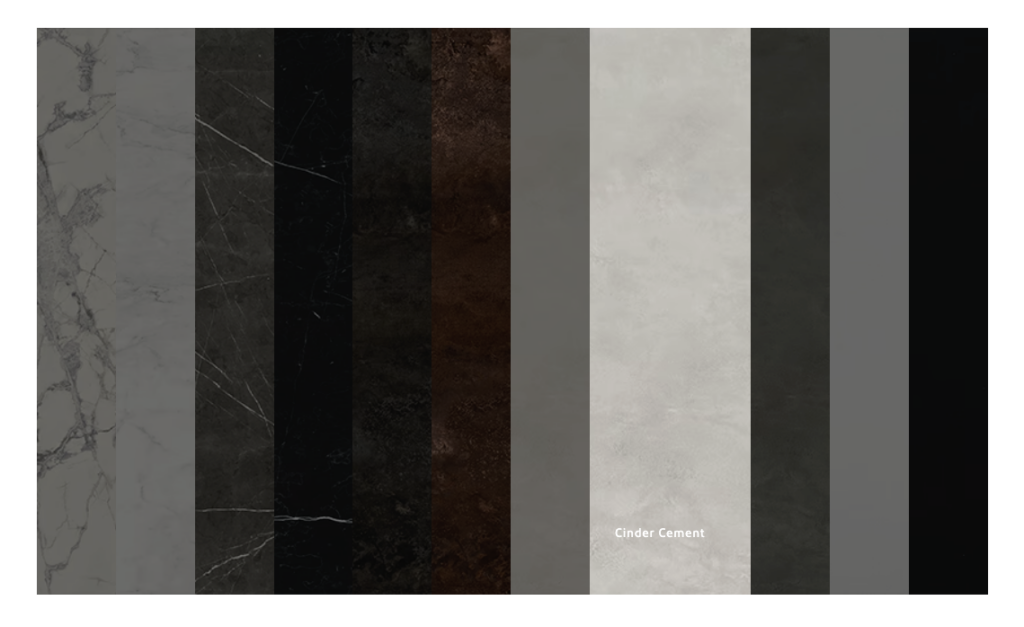
High-performance porcelain.
new. As far a counter tops go, it’s one of the hardest and most heat-resistant. It comes in a large array of colors and patterns and will have good consistency from piece to piece (because of the way it is manufactured).
Cons: Porcelain tends to be on the more expensive side. Typical countertop installers may not have the tools and experience to install this choice. Since the product is not as thick as others (typically ¼”-½” ), seams are needed for built up edges. Many of the products are not colored all the way through, so a surface chip would show. And, though damaging it is difficult, scratches and chips cannot be just “sanded out” like they can with other choices.
Wood
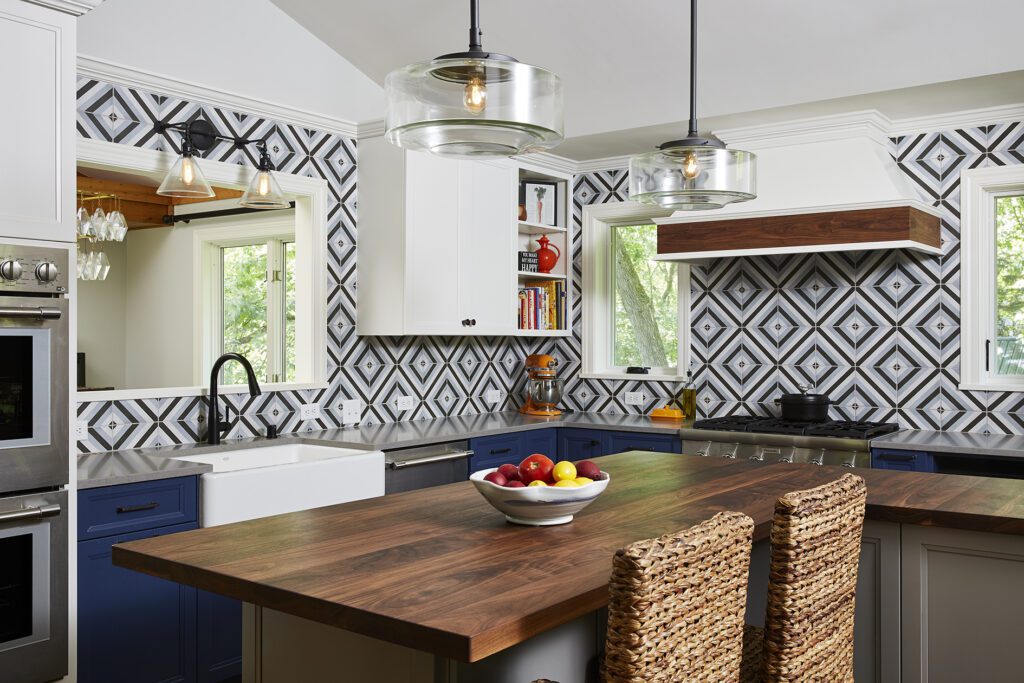 Pros: Wood is beautiful. It’s natural and inviting, and creates an atmosphere of warmth. It’s also a great surface for dining, making it ideal for kitchen islands. If the surface is nicked or scratched, sanding will quickly repair the damage. It’s environmentally-friendly, absorbs noise, and is moderately priced. A timeless countertop choice, the most popular wood surfaces are maple, cherry, oak, birch and teak. Prices vary, but wood is usually less expensive than natural and manufactured stone surfaces.
Pros: Wood is beautiful. It’s natural and inviting, and creates an atmosphere of warmth. It’s also a great surface for dining, making it ideal for kitchen islands. If the surface is nicked or scratched, sanding will quickly repair the damage. It’s environmentally-friendly, absorbs noise, and is moderately priced. A timeless countertop choice, the most popular wood surfaces are maple, cherry, oak, birch and teak. Prices vary, but wood is usually less expensive than natural and manufactured stone surfaces.
Cons: Wood needs to be treated regularly with a nontoxic mineral oil to prevent it from cracking and protect it from moisture. If your wood counter gets wet, it can warp if you don’t take of care of it.
Plastic Laminate
Pros: Good old plastic laminate is still a viable option depending on the aesthetic and performance required. It is one of the most budget friendly options out there and comes in a huge number of colors and patterns. (If you want a cool retro look, this choice could be a top contender.) It can also be formed for seamless backsplashes and rounded front edges. Install time is often quicker and easier. And, now there are even great options for integrated, under-mount sinks.
Cons: Durability in heavy-use areas is the biggest draw back. Scratches, chips or burns cannot be easily fixed. And, if you choose plastic laminate, be sure to keep any hot cookware on a trivet or you will be replacing your countertops. The seams can be vulnerable areas where water could get into the substrate, and that would cause the countertop to fail.
Laminate can be a great choice for secondary spaces such as laundry rooms, guest baths or basement snack bars. Metal or wood edges can provide a little more zing.
Another cool option – Dekton
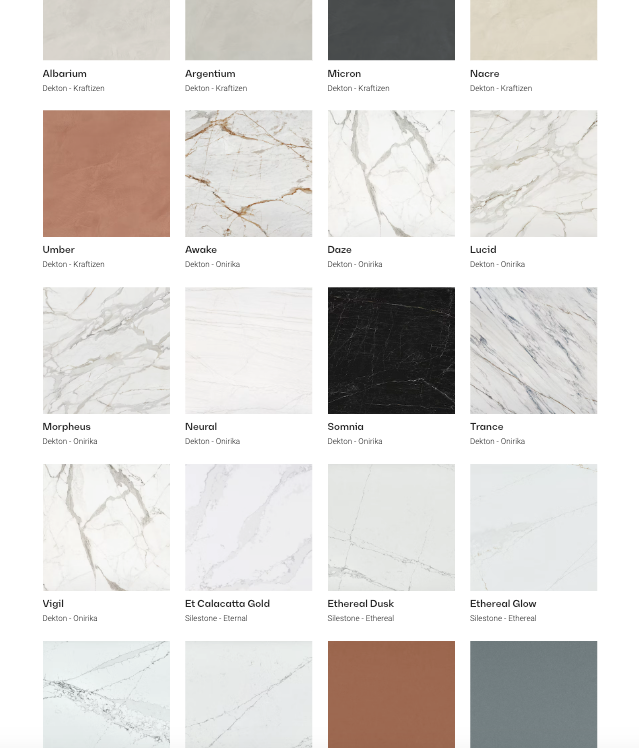
Pros: Dekton is manufactured similar to quartz countertops. As described by manufacturer Consentino as “an ultra compact surface”, it is made from quartz, glass and resin. Nearly indestructible, it won’t stain or scratch and you can put hot cookware or ice on it without worrying about damage. It’s beautiful, offers a variety of colors & designs, and either a matte or shiny finish. It comes with a 25-year warranty (which doesn’t, however, cover chipping or cracks that result from the impact of heavy objects).
Cons: The biggest con would be its high price, which is similar to quartz. You also have to find someone who knows how to install it correctly. And, if you have heavy pans or other objects that could occasionally fall from your cupboards or land on your counter with impact, this would not be the best option for you.
How Do I Decide Which Countertop Is Best For My Kitchen?
What’s perhaps most important when choosing the surface for your home is your day-to-day life.
- Concerned about red wine stains? Consider the least porous surface.
- Do you instinctively put hot pots and pans on the countertops? Avoid choosing a heat-vulnerable surface and opt for one that’s heat-resistant.
- If you want more control over the consistency of the look, choose a manufactured product rather than a natural one.
In addition to the functional aspects of kitchen surfaces, pick a surface you love. You’ll develop a relationship (of sorts) with your countertop over time — and if you value its look and feel, it may be worthwhile to embrace the added maintenance required.
Tip:
Picture your ideal kitchen in the morning and ask yourself, “what would you most like to see when you wake up”?
Each countertop option has pros and cons. There is no perfect choice, and no surface that’s “just right” for everyone. If you select the one that best fits your needs, along with the aesthetics you’re drawn to, you’ll be happy with your choice for years to come.
To see kitchen remodel photos for ideas and inspiration, visit Our portfolio.

